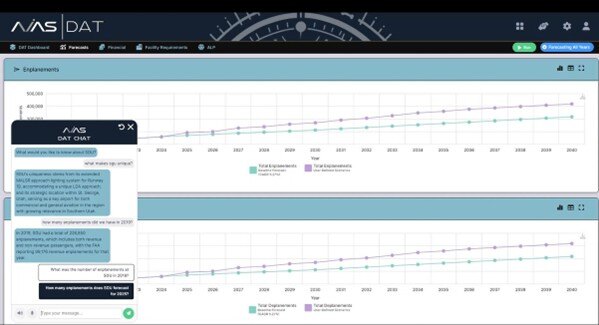Airport Planning in the Future - How to Use Technology to Our Advantage
How we travel today is constantly changing, mostly due to various technologies that are seemingly and consistently being improved in an ever-changing exponential fashion, especially as we are adding new travel modes like advanced air mobility, alternative energy vehicles, and even the return of supersonic travel. Subsequently, airport projects are therefore becoming more complex with constant pressure to tie together new modes with existing city and regional transportations systems and to do things faster, cheaper, and more sustainable. So how can we create a better plan and maintain relevance for those things that have been planned? How can we be flexible in the decision-making process?
In the airport planning and development world, technology should be a partner to us in our “big picture” approach by having a better crystal ball, but also help us to be more efficient and predictive in creating a “living” plan. A “living” plan, an airport master plan, for example, that can exist in a digital world so that when things change the decision maker can see and analyze the effects of that change almost immediately, be it a new airline entrant, a change in aircraft fleet mix, or even a travel interruption like a hurricane, a pandemic, or aviation related accident. Moreover, important planning questions like how such disruptions or additions will affect airport rates and charges, TSA security lines, and the need for more or less infrastructure to suit demand can be answered faster and in a much more organized fashion instead of waiting to re-do an entire master plan or airport layout plan.
Imagine if you can see the subsequent physical/spatial infrastructure needs on a digital airport layout plan where the program chooses the best site location for such development! Now add artificial intelligence to the equation and now you have a searchable master plan and essentially a “living,” Frequently Asked Questions guide in the form of basically an online robot that can also think (scary).

McFarland Johnson’s AVIAS DAT (Dynamic Analysis Tool) Using scenario-based forecasting enables airports to predict the impact of changes before they happen and also utilizes AI-powered, scenario-based queries for forecasting and financial analysis.
The question for most airports and planning/development consultants is “why should I invest?.” Many times, the upfront costs of technology, especially software, has the appearance of being cost prohibitive and difficult to justify. Unfortunately, the return on investment is not always immediately clear and this is where we, as an industry, must continue to push so that the net gain is that of a better industry through technology.
Investments in technologies require a holistic approach that aligns with strategic objectives, effectively addresses challenges, and ensures efficient resource utilization. For planning purposes, investments must align with strategic objectives, optimizing impact of said investments, its adaptability to changing conditions, promoting measurable outcomes, and providing better stakeholder engagement and collaboration.
Embracing digital transformation and technological advancements is more than a trend—it is a strategic imperative for planners, stakeholders, and airport sponsors aiming to maintain a competitive edge. By investing in state-of-the-art technologies that align with strategic objectives, optimize resource utilization, and adapt to dynamic conditions, airports can not only achieve significant operational efficiencies but also drive sustainable growth and resilience.

Fin Bonset, CM, ACE
National Planning Director
McFarland Johnson, Inc.


